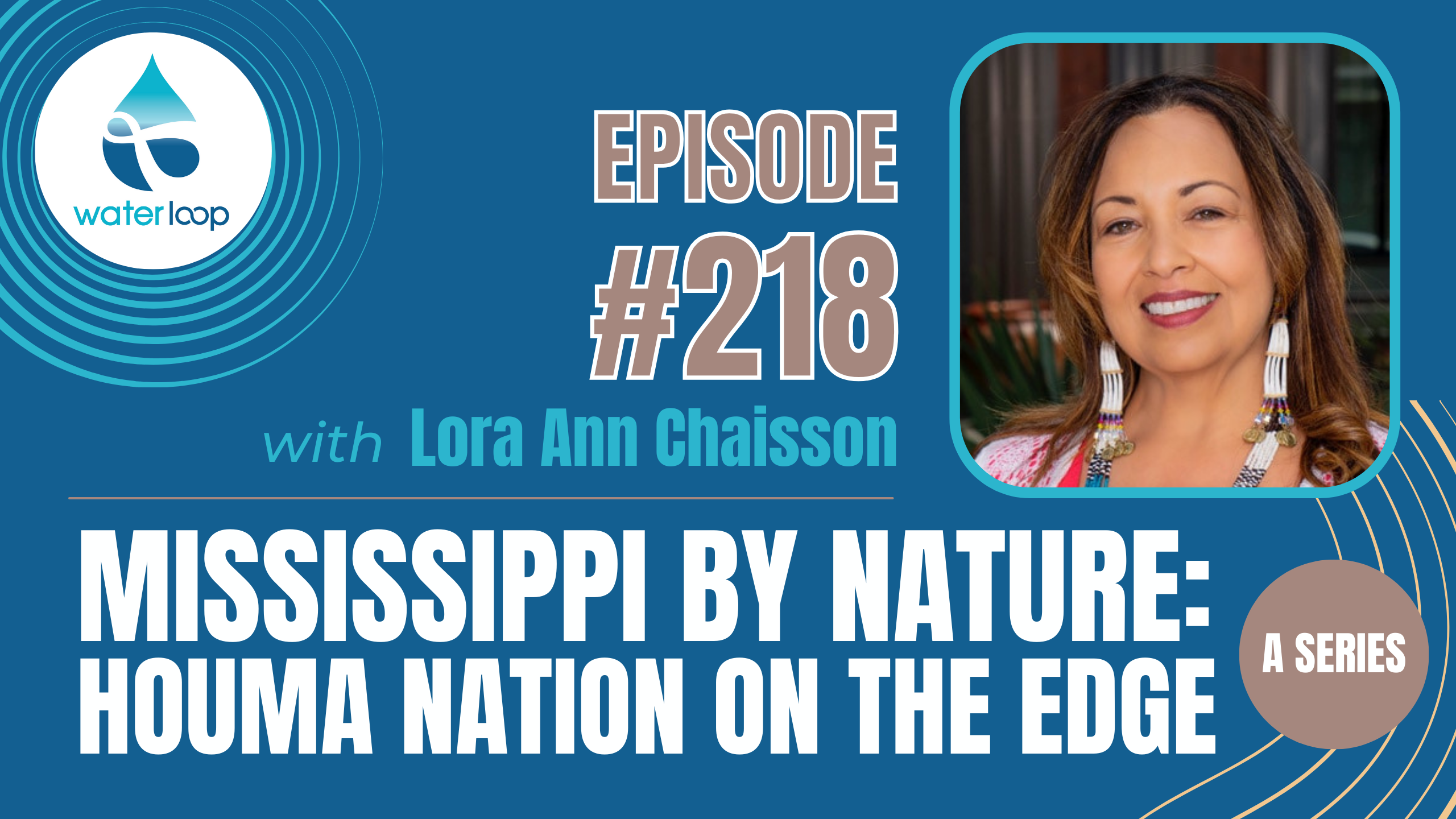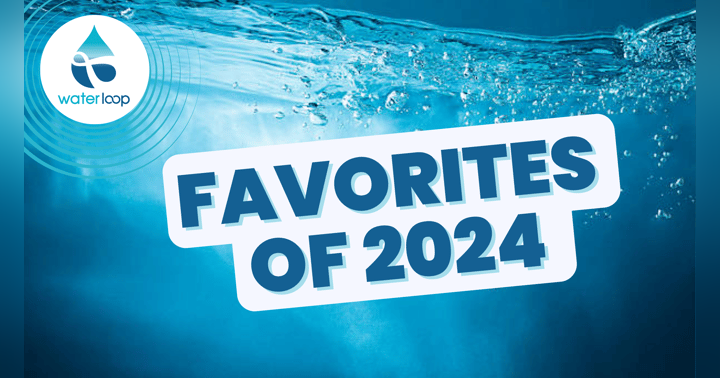Mississippi By Nature: A Series

The Mississippi By Nature series explores how nature based solutions are helping the river and its communities. waterloop is traveling up the river, from where it enters the Gulf of Mexico to the source at Lake Itasca in Minnesota. The Mississippi By Nature series is supported by the Walton Family Foundation and outfitted by Patagonia.
This episode features a ride to the mouth of the Mississippi River with Captain Richie Blink of Delta Discovery Tours, who shares how he has seen the river change over his decades on the water and how projects that use nature itself are beneficial.
Then John Sabo, Director of the ByWater Institute at Tulane University in New Orleans, provides an overview of the health of the Mississippi and the role of nature based solutions in reducing flood threats and improving water quality.
For the past 200 years, no single entity has had more influence on the Mississippi River than the U.S. Army Corps of Engineers. Since 1824, the federal agency has been responsible for maintaining navigation, promoting commerce, and preventing flooding along the waterway.
This responsibility has primarily involved the construction of rigid infrastructure such as levees and spillways, effectively constraining the river from its natural behaviors.
In this episode, Tim Axtman, a Senior Planner at the Army Corps, delves into this rich history and its outcomes. He also explains how the agency is working to adopt an engineering with nature approach in the Mississippi, which often entails allowing the river to flow more freely and transport sediment as it did in the past.
The Houma Nation has a deep-rooted history in southeastern Louisiana, where they have lived and thrived along the Mississippi River and its delta for centuries. Recently, they face escalating challenges as environmental degradation accelerates, pushing them ever closer to the coast and into the path of rising waters and land loss.
In this episode, Chief Lora Ann Chaisson of the Houma Nation discusses the profound transformations in her community’s environment—from lush woodlands to waterlogged landscapes—and how these changes have forced shifts in traditional ways of life and economic livelihoods.
Chief Chaisson also highlights the resilience of the Houma people as they navigate these turbulent changes, emphasizing the need for proper consultation and inclusion in environmental planning. This compelling account underscores the struggle for survival and cultural preservation against the relentless encroachment of water on their lands.
Louisiana faces severe coastal erosion and land loss, making coastal restoration a critical challenge. One of the innovative solutions is the $2.9 billion Mid-Barataria Sediment Diversion project, which aims to restore about 20 square miles of wetlands and land.
In this episode, Brad Barth, Diversions Program Manager from the Coastal Protection and Restoration Authority, discusses this massive engineering feat, which aims to harness the Mississippi River's natural sediment flow to rebuild the coast.
Barth explains the multiple factors contributing to coastal erosion and how this project integrates with other restoration efforts. He details the design and functionality of the sediment diversion, highlighting its role in delivering sediment and nutrients to sustain marshlands. Additionally, Barth shares insights into the broader strategy of using nature-based solutions, such as barrier island reconstruction and marsh creation, to protect and restore Louisiana's coast.
Agencies responsible for natural resources along the Gulf Coast and Mississippi River corridor often face significant challenges due to limited resources. A powerful solution to this problem is the GulfCorps program, which leverages funding from the Deepwater Horizon oil spill settlement to support nature-based projects.
This episode features conversations with Christina Wayne from The Nature Conservancy, Brian Pember from the U.S. Fish & Wildlife Service, and Austin Bowley from the Corps Network discuss the transformative impact of this initiative. Filmed at a worksite in Bayou Teche National Wildlife Refuge, they discuss the program’s dual focus on environmental restoration and workforce development.
The GulfCorps’ efforts include trail maintenance, invasive species removal, and building living shorelines, significantly enhancing public access and conservation. This episode underscores the critical need for such initiatives to sustain and restore nature while providing valuable job skills and career opportunities.
Floodplain reconnection has emerged as a crucial solution to mitigating flooding, improving water quality, and supporting biodiversity along the Mississippi River corridor. In this episode, Chris Rice of The Nature Conservancy discusses the restoration of Mollicy Farms, the largest floodplain reconnection project ever undertaken in the U.S.
Chris explains the extensive efforts involved in breaching levees, planting millions of trees, and reestablishing natural water flows to revive the 25-square mile floodplain along the Ouachita River in Louisiana.
The conversation highlights the significant environmental and community benefits of restoring such areas, including floodwater storage, habitat creation, and water filtration. Additionally, Chris delves into the partnerships and challenges encountered throughout the project, providing insights into how similar initiatives can be implemented elsewhere.
Communities along the Mississippi River face numerous challenges from natural disasters such as floods, hurricanes, and droughts. This episode explores how adopting nature-based solutions can bolster resilience against these impacts. Mayor Errick Simmons of Greenville, Mississippi, shares insights into his community's efforts and the collaborative initiatives of the Mississippi River Cities and Towns Initiative.
Simmons discusses the environmental and economic benefits of implementing nature-based infrastructure, such as floodplain reconnections and marsh restoration. He also highlights the importance of equitable strategies that support the community and foster corporate responsibility.
The conversation covers innovative funding models involving carbon credits and the reinsurance industry, emphasizing the need for sustainable and long-lasting solutions to protect communities along the river.
Memphis faces the dual challenge of protecting itself from Mississippi River flooding while enhancing the environment and public spaces.
The solution lies in nature-based projects that manage stormwater, restore wetlands, and provide community amenities.
In this episode Carol Coletta of Memphis River Parks Partnership and Jake Spears of Ducks Unlimited discuss two transformative riverfront projects on either side of the river. Tom Lee Park, on the Tennessee side, offers stormwater management, flood resilience, and recreation, while a 1,500-acre park across the river in Arkansas restores wetlands and bottomland hardwood forests.
These projects reduce sediment and nutrient runoff while connecting the community to nature through trails, education, and outdoor spaces. Together, they showcase how cities can use natural solutions for environmental protection and quality of life.
Watch the episode
The ever-changing nature of the Mississippi River poses significant challenges for those living behind the levee at Dogtooth Bend in southern Illinois, where increased flooding and infrastructure strain can impact everyday existence.
A promising solution involves nature-based strategies that restore floodplains to better manage water flow and reduce flood risk.
Tharran Hobson of The Nature Conservancy shares insights into collaborative efforts with NRCS and the Army Corps of Engineers to support landowners and implement natural infrastructure, such as reforestation, to slow water and prevent the formation of new river channels.
The work at Dogtooth Bend underscores the need to balance human life with ecological resilience in flood-prone regions.
The Mississippi River is essential to global agriculture and trade, but it is increasingly vulnerable to climate impacts, including severe droughts and floods, resulting in significant economic and environmental challenges.
Colin Wellenkamp, Executive Director of the Mississippi River Cities and Towns Initiative (MRCTI), discusses how the coalition is advancing nature-based solutions to build resilience along the river.
One notable example is Horseshoe Lake in East St. Louis, a community historically impacted by recurrent flooding and economic disadvantage. Restoration efforts there aim to reduce flood risks by enhancing natural floodplains, providing critical protection for residents and supporting biodiversity.
This initiative is part of MRCTI’s broader push to implement projects across 100,000 acres in eight states by the end of the decade, creating sustainable landscapes that safeguard both people and ecosystems in the face of a changing climate.
Stay tuned for more episodes!
















